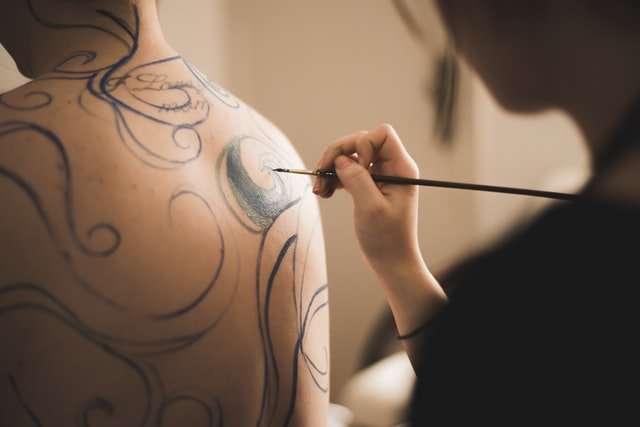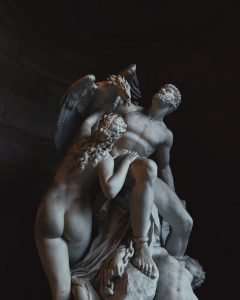Art fraud can happen to anyone, although it is more likely to be an issue for buyers than sellers.
The biggest problem with art fraud is that it’s not always easy to spot. And even when you think you’ve spotted it, it can still be very hard to prove. You could end up with a lot of expensive pieces of paper.
Treating art as an investment and trying to earn money from it may lead to disappointment, but if you want to get the most from your collection, the best thing you can do is to know what you’re buying.
There are lots of fakes and forgeries out there, so do your homework before you buy. It’s best not to rely on the gallery owner or dealer alone; get advice from a specialist before committing yourself – there are online forums where artists and experts discuss particular works and their authenticity.
You can find out a lot about a person by looking at their art. What they like, what kind of person they are, and what kind of life they lead.
To fake art is a crime, but to buy it is not. It is up to you to do your own research to make sure you buy original art. However, it is somewhat naive to think that you will be able to spot all fakes, especially if someone has put in the effort to make it look authentic.
Every year thousands of people buy art that turns out to be fake. The majority of these victims are not experts and have not fallen for elaborate schemes, but have been convinced by credible-looking reproductions and descriptions which have been manipulated by the seller or auction house.
Also, there are many things which cannot be detected by an amateur, even with extensive research. So how can you best avoid being scammed?
Do you believe in art fraud? The question may seem strange, but the fact is that lots of people buy and sell art for hundreds of millions of dollars, and many of them don’t even look at what they are buying or selling. You may be one of those people.
Maybe you think that art fraud doesn’t exist. I’ve heard it said that “a fool and his money are soon parted,” but surely there aren’t fools who would be parted from their money by a work of art. Well, think again.
Tens of millions of dollars change hands every year on the basis of someone’s opinion that a particular piece is by a particular artist. And while most fine-art dealers are honest, there have been all too many instances when one dealer tries to pass off a fake painting as genuine, or when a dealer sells an antique he claims is authentic, when in fact it is not.
If you have ever tried to buy a painting, sculpture or other piece of art, you will be familiar with the problem of authenticity. You see an item you like and want to buy it, but without knowing its history it is difficult to be sure that the work is genuine. Even creating a convincing fake can be done these days using digital manipulation; the result can even be authenticated by an expert using specialist equipment.
Telling a real work from a fake or forgery is not easy. There are many methods used to spot fakes, but they all involve checking some physical attribute of the work against the history of its creation. Sometimes this is obvious; at other times it requires considerable expertise.
The only foolproof way to avoid buying a forgery is not to buy anything that is not documented in a trusted and independent archive with good provenance and a full chain of title (i.e., ownership history). That way at least you know what you’re looking at probably isn’t fake.
We want to buy art. We want it to be beautiful, interesting, or cool. We want it to be authentic.
In a perfect world we could just ask the artist: “Is this one of yours?” Unfortunately, for a variety of reasons, some artists are reluctant to answer that question directly. Instead, we’re forced to investigate ourselves.
“What makes a painting original?” asks the curator of the De Young Museum in San Francisco. “The answer is simple,” he says. “Gut feeling.”
But gut feeling is not good enough for us collectors who sometimes find ourselves buying fake art – sometimes without even knowing it! And since art experts are no better than amateurs at detecting fraud, we need to learn the science behind what we’re buying.*
Art forgery is a billion-dollar industry. So if you are buying art, you are probably going to encounter fakes. But the primary motivation of art forgers is not to trick people into buying something that is worthless — it is to trick people into buying something that is valuable and then steal it from them. Fakes don’t have to be perfect to be good enough to steal. And in general, the more perfect something looks, the easier it will be to steal.
Trying to separate the real thing from the fake, therefore, is not just a matter of spotting mistakes. It’s a matter of figuring out how someone who was trying to pass off a fake would behave.
The first thing they would do is look at other fakes. Not just paintings by other artists, but other fakes of this painting. They want to see what mistakes previous forgers made so they can avoid making those same mistakes themselves.*
The second thing they would do is examine genuine paintings by the same artist. They want to know what elements recur in multiple paintings so they can make sure theirs has those elements too.*
The third thing they would do is try to copy everything about an original painting except its content — its paint thicknesses, canvas weave pattern,
A piece of concept art is not just an image. It is a proposal for what the final game may look like. The artist creates the image as a visual representation of his/her vision, in order to show it to their client and get feedback.
The most effective way to create concept art is to first understand the vision of a product, then sketch out your initial ideas, and finally polish them until they are within the design requirements set by the game’s producer. Concept artists must be able to work well with others, as they need to effectively communicate with the other members of their team in order to achieve their goals.
When working on a concept for a video game, there are many different aspects that you will have to take into account in order to decide on your idea. These aspects include:
– Target Audience: Who is going to be playing this game? What ages will they be? Are there any specific cultural aspects that you need to take into consideration?
– The Genre: What type of game are you making? Is it a role-playing game or an action-adventure? Is it realistic or fantastical? Will it be first person or third person?
– Mood/Tone: How do you want the player to feel



